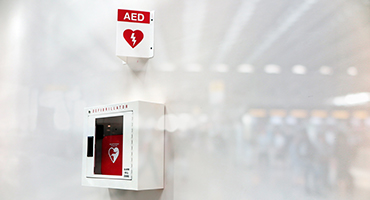FALL PREVENTION AWARENESS WEEK – SEPTEMBER 23 – 29, 2015
By The PHCD Team | September 22, 2015
The importance of addressing fall risk factors for seniors and older adults.
Falls can cause moderate to severe injuries and mobility issues in seniors and older adults, especially if hospitalization occurs as a result of a fall. A nasty fall can do anything from weaken joints to fracture bones, and if injuries don’t heal fully, older adults may experience pain or hindered functioning of their feet, ankles, calves, legs, or hips. Ultimately, falls can take a serious toll on a person’s quality of life and independence.
Among older adults, falls are the leading cause of injury deaths, unintentional injuries, and hospital admissions for trauma. To recognize this critical issue, at the state level, SCR 77 (D-Lowenthal) was passed in 2008 declaring the first week of Fall each year as Fall Prevention Awareness Week.
In support of Fall Prevention Awareness Week, PHCD and our Lifeline of the North Bay service are sharing information on common fall causes and ways you can prevent them.
How Often Falls Occur
According the Center for Disease Control and Prevention (CDC), 30% of adults 65 and older suffer a fall in the United States each year. 60% of people 80 and older share the same fate. Up to 30% of those suffer injuries such as “lacerations, hip fractures, or head traumas.” As a result, fall-inflicted injuries often make it difficult to live independently, while increasing the risk of early death.
The Cause of Falls
Many different factors can cause a fall. Perhaps you’re standing in a slippery shower or bathtub, while other falls can occur from the inability to effectively see an obstacle in a walking path. According to research conducted by the UCLA GERONet on Health and Aging, falls generally occur from one of the following ways:
- Weak legs and unstable walking
- Balance problems
- Poor vision
- Memory problems
- Certain types of medications
- A sudden decrease in blood pressure while standing
The Cost of Falls
Although preventing falls is the best solution, not all falls can be prevented and about half of older adults who fall cannot get back up without help
- Falls account for over 60% of all non-fatal-injury emergency department visits in the 65 and older population.
- $34 billion is the estimated total cost for fall injuries annually.
- $35,000 is the average cost for the hospitalization for a fall injury.
Fall Prevention
To minimize the risk of falling, the CDC recommends:
- Regular exercise to increase leg strength and balance
- A healthy diet void of alcohol
- Regular eye exams
- Discuss with your doctor prescription and over-the-counter drugs that may cause drowsiness or dizziness.
- Make your home safer by removing tripping obstacles and falling hazards, installing additional hand rails and banisters, improving lighting, and making sure all walkways are clear of clutter.
- Sign up for Lifeline of the North Bay, the leading 24-hour Personal Emergency Response System (PERS) offered by PHCD




